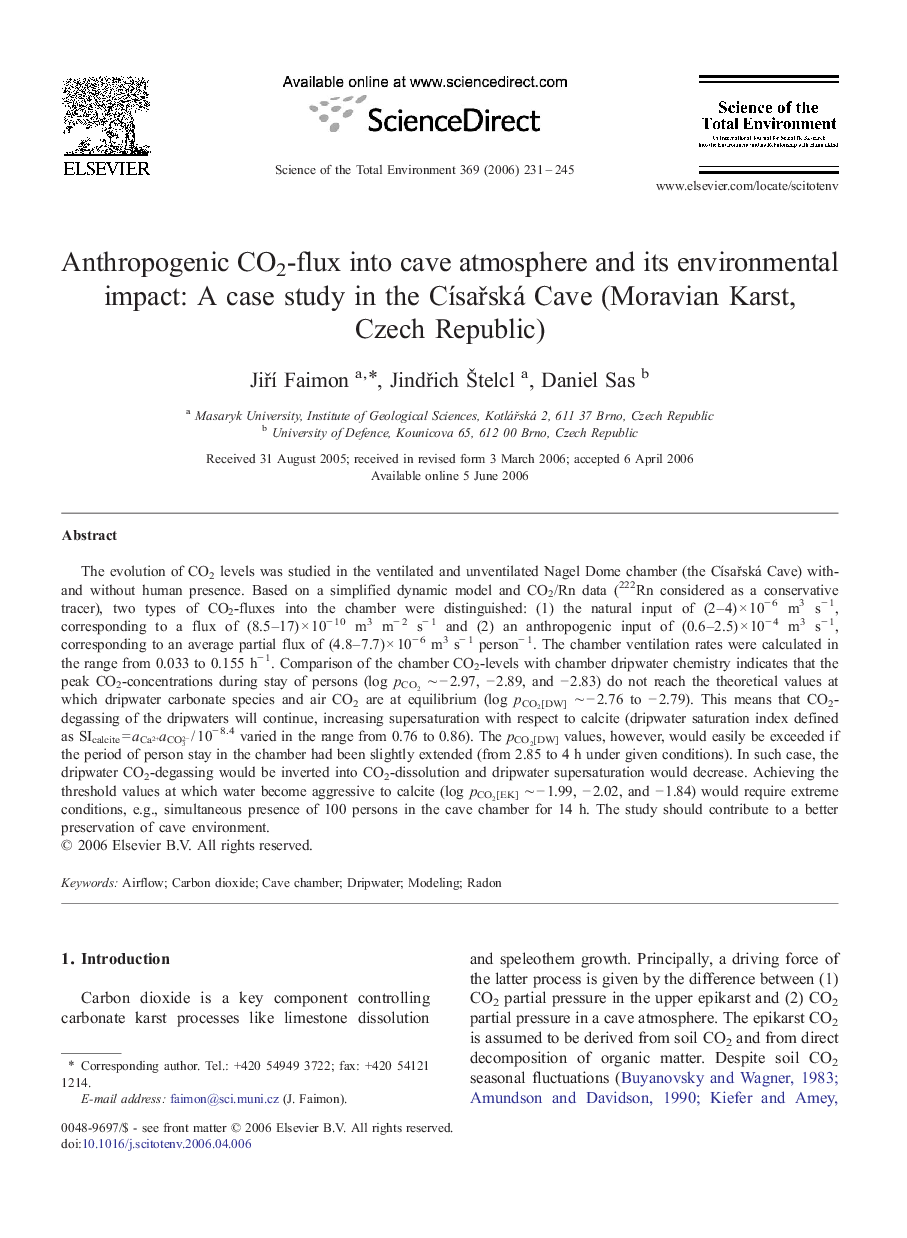| کد مقاله | کد نشریه | سال انتشار | مقاله انگلیسی | نسخه تمام متن |
|---|---|---|---|---|
| 4433954 | 1619966 | 2006 | 15 صفحه PDF | دانلود رایگان |

The evolution of CO2 levels was studied in the ventilated and unventilated Nagel Dome chamber (the Císařská Cave) with- and without human presence. Based on a simplified dynamic model and CO2/Rn data (222Rn considered as a conservative tracer), two types of CO2-fluxes into the chamber were distinguished: (1) the natural input of (2–4) × 10− 6 m3 s− 1, corresponding to a flux of (8.5–17) × 10− 10 m3 m− 2 s− 1 and (2) an anthropogenic input of (0.6–2.5) × 10− 4 m3 s− 1, corresponding to an average partial flux of (4.8–7.7) × 10− 6 m3 s− 1 person− 1. The chamber ventilation rates were calculated in the range from 0.033 to 0.155 h− 1. Comparison of the chamber CO2-levels with chamber dripwater chemistry indicates that the peak CO2-concentrations during stay of persons (log pCO2 ∼ − 2.97, − 2.89, and − 2.83) do not reach the theoretical values at which dripwater carbonate species and air CO2 are at equilibrium (log pCO2[DW] ∼ − 2.76 to − 2.79). This means that CO2-degassing of the dripwaters will continue, increasing supersaturation with respect to calcite (dripwater saturation index defined as SIcalcite = aCa2+aCO32− / 10− 8.4 varied in the range from 0.76 to 0.86). The pCO2[DW] values, however, would easily be exceeded if the period of person stay in the chamber had been slightly extended (from 2.85 to 4 h under given conditions). In such case, the dripwater CO2-degassing would be inverted into CO2-dissolution and dripwater supersaturation would decrease. Achieving the threshold values at which water become aggressive to calcite (log pCO2[EK] ∼ − 1.99, − 2.02, and − 1.84) would require extreme conditions, e.g., simultaneous presence of 100 persons in the cave chamber for 14 h. The study should contribute to a better preservation of cave environment.
Journal: Science of The Total Environment - Volume 369, Issues 1–3, 1 October 2006, Pages 231–245